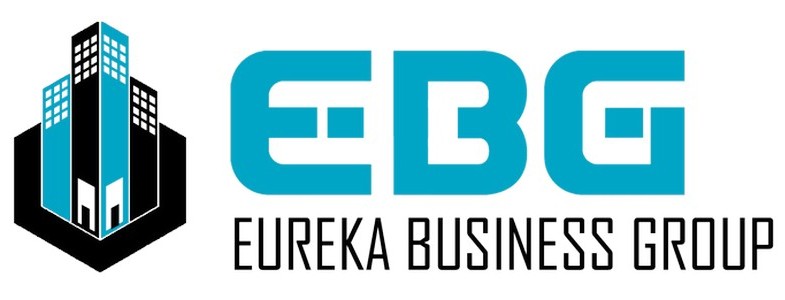- Home
- Retail
- Retail Investors Resources
- How to Find Profitable Retail Locations: Key Factors to Consider!
How to Find Profitable Retail Locations: Key Factors to Consider!
Finding the right location for a retail business is one of the most critical decisions you will make as a retailer. A profitable location can significantly impact your sales, brand perception, and overall success. As retail landscapes continue to evolve, it’s essential to adopt a strategic approach when selecting your store’s location. This blog post outlines the key factors to consider to help you identify profitable retail locations.
1. Understand Your Target Market
Before you start scouting locations, it’s crucial to understand who your target market is. Are you targeting millennials, families, seniors, or a specific niche market? Different demographics have distinct preferences and shopping habits, so your location should align with your target audience’s lifestyle.
Conduct Market Research
Conduct surveys, focus groups, and demographic studies to gain insights into your target market’s preferences. Use data analytics tools to evaluate consumer behavior in various areas. Understanding the demographics, income levels, and shopping preferences in different neighborhoods will help you make informed decisions about potential locations.
2. Analyze Foot Traffic
Foot traffic is a significant indicator of potential sales for retail businesses. High foot traffic means more exposure and a greater chance of converting passersby into customers.
Evaluate Location Types
- High-Street Locations: Typically found in busy commercial districts, these locations often have high visibility and foot traffic. However, they can also come with higher rent.
- Shopping Malls: Malls provide a captive audience, with customers already in a shopping mindset. Evaluate the foot traffic patterns within the mall and the anchor stores present.
- Suburban Areas: Consider areas with growing populations and family-oriented communities. These locations may offer lower rent but still provide ample foot traffic.
Utilize Technology
Use tools like Google Maps, foot traffic analysis apps, and social media insights to gauge foot traffic in your desired locations. Monitor traffic patterns at different times of the day and week to get a comprehensive view.
3. Assess Competition
Understanding your competition is essential in identifying a profitable retail location. A thorough competitive analysis will help you determine the saturation of similar businesses in an area and identify opportunities for differentiation.
Identify Direct and Indirect Competitors
- Direct Competitors: These are businesses selling similar products or services. Analyze their strengths, weaknesses, customer reviews, and pricing strategies.
- Indirect Competitors: These businesses may not sell the same products but vie for the same consumer spending. For example, if you’re opening a new café, consider nearby restaurants and snack shops.
Gap Analysis
Conduct a gap analysis to identify what your competitors may be lacking. This can include product variety, customer service, or unique offerings. Positioning your business to fill this gap can lead to a competitive advantage.
4. Evaluate Accessibility and Visibility
Accessibility and visibility are crucial factors for retail success. Customers should find it easy to reach your store, whether they’re walking, driving, or using public transportation.
Transportation Options
Consider the availability of public transportation, parking facilities, and pedestrian access. A location near public transport can attract customers who don’t drive, while adequate parking is essential for those who do.
Storefront Visibility
Your store’s visibility from the street can impact foot traffic. Ensure your storefront is visible from a distance and has an inviting appearance. Great signage can also enhance visibility and attract customers’ attention.
5. Consider Local Economic Conditions
The economic health of a location can greatly influence your retail business’s success. A booming economy may indicate increased disposable income among consumers, while a declining economy may suggest otherwise.
Evaluate Key Economic Indicators
- Unemployment Rate: A low unemployment rate typically indicates a healthy economy and a potential increase in consumer spending.
- Income Levels: Higher income levels can mean more disposable income, leading to increased sales. Analyze the average income levels in the area.
- Business Environment: Consider the overall business environment in the area, including the presence of other businesses, economic development initiatives, and government support for local enterprises.
6. Check Zoning Regulations
Before finalizing a retail location, ensure it complies with local zoning regulations. Zoning laws dictate what types of businesses can operate in certain areas, and violating these laws can lead to fines or forced relocation.
Research Zoning Codes
Consult with local planning departments or real estate professionals to understand the zoning regulations for your desired locations. Be aware of any restrictions on signage, hours of operation, or specific business types.
7. Analyze Lease Terms and Costs
The cost of leasing a retail space is a significant factor in your overall budget. Understanding lease terms and costs will help you make a financially sound decision.
Key Lease Terms to Consider
- Base Rent: Understand the base rent and how it compares to similar locations. Determine if it fits within your budget.
- Additional Costs: Be aware of any additional costs, such as property taxes, maintenance fees, and utilities. These can significantly impact your bottom line.
- Lease Duration: Consider the lease duration and terms for renewal. A longer lease can provide stability, but it may limit your flexibility if the location does not perform as expected.
Negotiate Lease Terms
Don’t hesitate to negotiate lease terms with landlords. Many are willing to work with potential tenants, especially if they see a strong business plan and value in your retail concept.
8. Test the Market
Before committing to a location, consider testing the market. This could involve opening a pop-up shop, launching a temporary store, or using a mobile retail unit. These methods allow you to gauge customer interest, test your product offerings, and evaluate the location without a long-term commitment.
9. Seek Professional Guidance
Finding the perfect retail location can be complex. Consider working with a commercial real estate broker who specializes in retail properties. A knowledgeable broker can provide valuable insights, access to exclusive listings, and assistance in negotiating lease terms.
Conclusion
Finding a profitable retail location requires a combination of thorough research, strategic planning, and an understanding of your target market. By considering these key factors—target market, foot traffic, competition, accessibility, economic conditions, zoning regulations, lease terms, market testing, and seeking professional guidance—you can position your retail business for success. Investing time and effort into the location selection process will pay off in the long run, ultimately contributing to your business’s profitability and growth.



